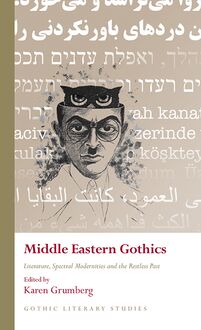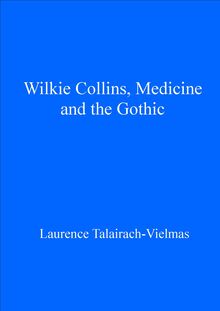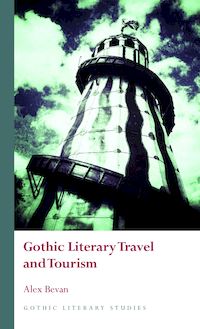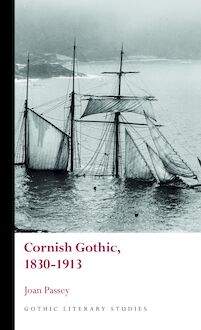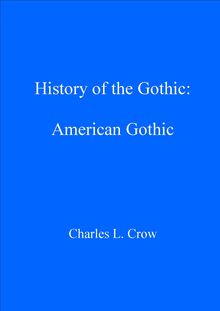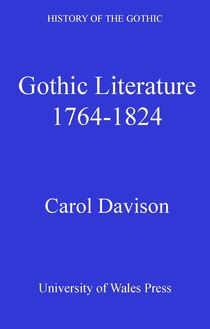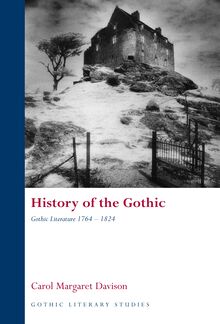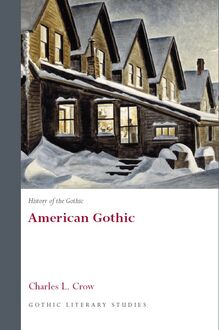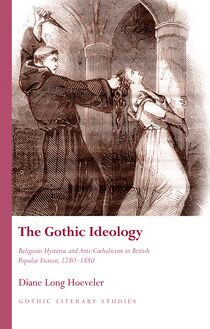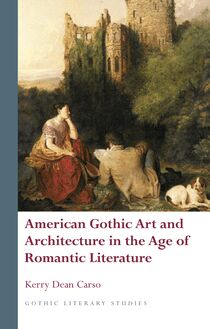-
 Univers
Univers
-
 Ebooks
Ebooks
-
 Livres audio
Livres audio
-
 Presse
Presse
-
 Podcasts
Podcasts
-
 BD
BD
-
 Documents
Documents
-
- Cours
- Révisions
- Ressources pédagogiques
- Sciences de l’éducation
- Manuels scolaires
- Langues
- Travaux de classe
- Annales de BEP
- Etudes supérieures
- Maternelle et primaire
- Fiches de lecture
- Orientation scolaire
- Méthodologie
- Corrigés de devoir
- Annales d’examens et concours
- Annales du bac
- Annales du brevet
- Rapports de stage
La lecture à portée de main
Vous pourrez modifier la taille du texte de cet ouvrage
Découvre YouScribe en t'inscrivant gratuitement
Je m'inscrisDécouvre YouScribe en t'inscrivant gratuitement
Je m'inscrisEn savoir plus
Vous pourrez modifier la taille du texte de cet ouvrage
En savoir plus

Description
Sujets
Informations
| Publié par | University of Wales Press |
| Date de parution | 15 juillet 2012 |
| Nombre de lectures | 0 |
| EAN13 | 9781783165315 |
| Langue | English |
Informations légales : prix de location à la page 0,0750€. Cette information est donnée uniquement à titre indicatif conformément à la législation en vigueur.
Extrait
GOTHIC MUSIC
SERIES PREFACE
Gothic Literary Studies is dedicated to publishing groundbreaking scholarship on Gothic in literature and film. The Gothic, which has been subjected to a variety of critical and theoretical approaches, is a form which plays an important role in our understanding of literary, intellectual and cultural histories. The series seeks to promote challenging and innovative approaches to Gothic which question any aspect of the Gothic tradition or perceived critical orthodoxy.
Volumes in the series explore how issues such as gender, religion, nation and sexuality have shaped our view of the Gothic tradition. Both academically rigorous and informed by the latest developments in critical theory, the series provides an important focus for scholastic developments in Gothic studies, literary studies, cultural studies and critical theory. The series will be of interest to students of all levels and to scholars and teachers of the Gothic and literary and cultural histories.
SERIES EDITORS
Andrew Smith, University of Glamorgan
Benjamin F. Fisher, University of Mississippi
EDITORIAL BOARD
Kent Ljungquist, Worcester Polytechnic Institute Massachusetts
Richard Fusco, St Joseph’s University, Philadelphia
David Punter, University of Bristol
Chris Baldick, University of London
Angela Wright, University of Sheffield
Jerrold E. Hogle, University of Arizona
Gothic Music
The Sounds of the Uncanny
Isabella van Elferen
© Isabella van Elferen, 2012
All rights reserved. No part of this book may be reproduced in any material form (including photocopying or storing it in any medium by electronic means and whether or not transiently or incidentally to some other use of this publication) without the written permission of the copyright owner. Applications for the copyright owner’s written permission to reproduce any part of this publication should be addressed to the University of Wales Press, 10 Columbus Walk, Brigantine Place, Cardiff CF10 4UP.
www.uwp.co.uk
British Library CIP Data
A catalogue record for this book is available from the British Library.
ISBN 978-0-7083-2512-4
e-ISBN 978-1-78316-531-5
The right of Isabella van Elferen to be identified as author of this work has been asserted in accordance with sections 77 and 79 of the Copyright, Designs and Patents Act 1988.
Cover image: George Grie, Haunting Goth (2009), digital artwork. © George Grie
For my mother Els and my sister Marjolein, in boundless admiration of their courage and strength
Il y a plenty de hors-texte
C ONTENTS
Acknowledgements
Introduction: ‘Baleful Sounds and Wild Voices Ignored’
1 The Sound of Gothic Literature
2 Gothic Film Music:The Audiovisual Uncanny
3 Gothic Television Music: The Unhomely Home
4 Gothic Game Music: Hyperreality Haunted
5 Goth Music: Uncanny Embodied
6 The Unthinkable Sounds of the Uncanny
Notes
Bibliography
Acknowledgements
Portions of this study have appeared elsewhere and I am pleased to be able to include them here.
Sections of chapter 3 have appeared in Isabella van Elferen, ‘Haunted by a Melody: Ghosts, Transgression, and Music in Twin Peaks’, in E. Peeren and M. Del Pilar Blanco (eds), Popular Spirits: The Haunted Spaces of Everyday Culture (Continuum, 2010).
Sections of chapter 5 have appeared in Isabella van Elferen, ‘Spectral Liturgy: Of Goth Parties and Gothic Music’, copyright 2012 from PopGoth: The Gothic in Contemporary Popular Culture by J. Edwards and A. Soltysik Monnet (eds), reproduced by permission of Taylor and Francis group, LLC, a division of Informa plc.
Introduction ‘Baleful Sounds and Wild Voices Ignored’ 1
In Darkness Hidden
Uncanny sounds pervade Gothic. Hollow footsteps and ghostly melodies haunt the heroines of Gothic novels. The ‘children of the night’ ‘make music’ in Bram Stoker’s Dracula . Booming leitmotifs announce the Count in Dracula film adaptations. Piercingly high violin tones or disembodied childsong indicate supernatural presence in spooky movies. The eerie soundtracks of Gothic television serials invade the safety of the home. Pounding drones of white noise guide survival horror game players through deserted cityscapes. At Goth club nights, all these sounds are mixed into a live Gothic tale.
Although sound and music occupy a prominent place in all the manifestations of Gothic, the sonic characteristics of the genre remain obscured in Gothicist as well as musicological research. The sounds and music in Gothic literature are seldom addressed; Emma McEvoy’s recent online essays, which explore theatrical and musical adaptations of works such as Matthew Lewis’s The Castle Spectre , provide a starting point for such endeavours. 2 Even though film music studies do address cinematic renderings of Gothic novels and scripts, they analyse the horror rather than Gothic dimensions of their soundtracks since these visual genres have become conflated in popular and academic discourses: the essays in two volumes that appeared on horror film music in recent years, Terror Tracks (ed. Philip Hayward, 2009) and Music in the Horror Film (ed. Neil Lerner, 2010) discuss films from Friedrich Murnau’s Nosferatu (1922) to Takashi Shimizu’s The Grudge (2004). Hardly any scholarship discussing Gothic television and video games exists and as a result their soundtracks have never been addressed in terms of Gothic characteristics or functions. While Helen Wheatley has given clear definitions of Gothic television as a twentieth-century mediator of the domestic uncanny and the haunted house in Gothic Television (2006), the soundtracks of Gothic serials like Twin Peaks and The X-Files are analysed in terms of composing styles only rather than as representatives of Gothic television music. 3 The ‘eerie music’ and ‘deadly silences’ of Gothic video game music are studied – if at all – as the interactive equivalent of horror film music, which leaves their Gothic components out of the analysis. 4
Unlike Gothic film, television, or game music, the music of the Goth milieu did not originate as the sonic accompaniment to a Gothic narrative in text or visuals, but as a primarily musical expression of Gothic themes. Perhaps for that reason, it is the only Gothic music that is also explicitly referred to as such, both inside and outside the scene. Curiously, any critical assessment of it reverts to adjectives that have nothing to do with music. Goth music is described as ‘sinister’, ‘sombre’ and ‘depressing’ in Paul Hodkinson’s empirical study of the Goth scene and as ‘moody’, ‘gloomy’ and ‘macabre’ in Jennifer Park’s account of Goth rock and fashion. 5 Above all, Goth music is described by those who make it, those who distribute it, and those who listen to it as dark . Bauhaus’s second single was called ‘Dark Entries’; a Michigan-based Goth DJ, cypher, runs an online radio station called Dark Nation Radio; journalists describe ‘the dark reign’ of Goth music. 6 Analyses of the compositional strategies leading to this supposed darkness are rare, and limit themselves to individual artists and bands. 7 The research field of Gothic music, thus, is limited to Goth, and if this music is assessed in terms of its Gothic-ness this key quality is only described in the vaguest of terms: as invisible and intangible ingredients of Gothic phantasmagoria, sound and music are veiled by adjectives pertaining to the visual, the visceral and the affective.
This book addresses the problems of Gothic music research in two ways. Tracing sound and music through the various transfigurations of the Gothic genre, on the one hand, it widens the scope of Gothic music from subculture only to literature, film, television and video games. On the basis of the shared characteristics of these forms of sonic Gothic, on the other, the book develops a definition of Gothic music in musical rather than visual or tactile terms. I conceptualise sonic Gothic, and Gothic music in particular, as ‘the sounds of the uncanny’ operating on various simultaneous levels that correspond with the levels that can be distinguished in the Gothic genre at large.
The Sounds of the Uncanny
A rumbling cello. Two men in an empty corridor.
‘Did you hear it?’
‘Yes, the child.’
‘The… child?’
‘Yes yes, the child!’
‘There… is no child here.’
[Silence. Cello rumble. Brief violin motifs.]
‘But… the dogs!’
‘There are… neither children nor dogs here.’
‘No?’
‘No. Goodnight.’
As a violin tone moves up and down in a fast glissando, an opening door ends a discomforting scene from Carl Theodor Dreyer’s Vampyr (1932). This expressionist film adaptation of Sheridan LeFanu’s stories in In a Glass Darkly (1872) employs grotesque shadows and camera techniques like double exposure to create cinematic half-beings depicting the ‘shadow existence’ ( Schattendasein ) of vampires. Sound and music are used to heighten the ambivalence of visuals and narratives as they move on the blurry boundaries between dream, fantasy and reality. The dialogue cited above suggests that perception deceives and that hearing sound does not necessarily imply presence. If there are no children or dogs around, what did either man hear? Was there a sound at all, or did they just imagine it? And if there was a sound, did it have a physical source? The dialogue could have appeared in any Gothic novel. Authors such as Ann Radcliffe, Bram Stoker, Shirley Jackson and Mark Z. Danielewski describe similar un/heard and dis/embodied sounds disturbing the silence of haunted houses. Gothic spectres are often audible before they become visible, and their ephemeral voices are all the more chilling when they sing. Underlining the uncanniness of such sounds with nondiegetic music, 8 Dreyer’s soundtrack composer Wolfgang Zeller adds the low rumble of a cello, a few string motifs and, accompanying the opening of the door, a violin hovering upwards and downwards in the suggestive perpetuum mobile of the musical glissando – higher and higher, down and down, until it is
-
 Univers
Univers
-
 Ebooks
Ebooks
-
 Livres audio
Livres audio
-
 Presse
Presse
-
 Podcasts
Podcasts
-
 BD
BD
-
 Documents
Documents
-
Jeunesse
-
Littérature
-
Ressources professionnelles
-
Santé et bien-être
-
Savoirs
-
Education
-
Loisirs et hobbies
-
Art, musique et cinéma
-
Actualité et débat de société
-
Jeunesse
-
Littérature
-
Ressources professionnelles
-
Santé et bien-être
-
Savoirs
-
Education
-
Loisirs et hobbies
-
Art, musique et cinéma
-
Actualité et débat de société
-
Actualités
-
Lifestyle
-
Presse jeunesse
-
Presse professionnelle
-
Pratique
-
Presse sportive
-
Presse internationale
-
Culture & Médias
-
Action et Aventures
-
Science-fiction et Fantasy
-
Société
-
Jeunesse
-
Littérature
-
Ressources professionnelles
-
Santé et bien-être
-
Savoirs
-
Education
-
Loisirs et hobbies
-
Art, musique et cinéma
-
Actualité et débat de société
- Cours
- Révisions
- Ressources pédagogiques
- Sciences de l’éducation
- Manuels scolaires
- Langues
- Travaux de classe
- Annales de BEP
- Etudes supérieures
- Maternelle et primaire
- Fiches de lecture
- Orientation scolaire
- Méthodologie
- Corrigés de devoir
- Annales d’examens et concours
- Annales du bac
- Annales du brevet
- Rapports de stage

